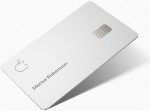
If you somehow predicted that a company best known for its high-end vacuums and air purifiers would also wind up making the world’s most coveted hair tool, please come collect your prize.
We’re talking, of course, about Dyson and its legendary Airwrap. Launched in 2018, the multi-functional styler has since earned a cult following for its ability to dry, smooth, and curl without the use of extreme heat. Eight different brush and barrel attachments make it suitable for a range of different hair types and textures — plus, it comes with a sleek leather case for easy storage.
No blazing-hot plates, no blistering metal rods, and no need to head to the salon for a bouncy, Cindy Crawford-worthy blowout anymore? If that all sounds too good to be true, it kind of is: The Airwrap is even more expensive than a PlayStation 5 and just as hard to find.
Where to buy a Dyson Airwrap
We managed to catch a limited restock of the original Fuchsia/Nickel version ($549) on the Dyson website while this article was being written, but that lasted all of 36 hours. Things were similarly dire at Amazon, Best Buy, Nordstrom, Ulta, and Sephora the last time we checked; both the standard Airwrap and the special-edition Prussian Blue/Rich Copper variant ($599) were sold out everywhere as of mid-February 2022.
Buying a pre-owned Airwrap is always an option, with some asterisks. Dyson had a refurbished Silver/Copper one listed for $499.99 in its online outlet store at the time of writing, though its usual two-year warranty was cut in half. (It’s also important to note that refurbished Dyson products are final sale and can’t be returned.) You can try eBay, Poshmark, and Facebook Marketplace for pre-owned Airwraps, but buyer beware of high markups and incomplete sets missing some or all of the attachments.
This brings us to an extremely important question: Is the Dyson Airwrap even worth the cost or the hassle? In a word, perhaps.
Our Dyson Airwrap review
We’d love to tell you that the Airwrap is an overhyped gimmick so you could save your hard-earned money, unsubscribe from all of those restock email alerts, and finally close out the Stock Informer tab that’s been pinned to your browser window for months. In fact, that’s probably going to be the case if you’re someone who doesn’t go out of the way to style their hair every single day: The Airwrap has a semi-steep learning curve, it takes up a lot of space, and at the end of the day, it just isn’t some miracle-worker for unruly tresses that can’t be tamed by other gadgets, said Mashable tech reporter Rachel Kraus.
But believe it or not, there is an actual time and place for a $550 hair tool. The Airwrap is designed for use on damp hair, so if you like getting ready right after you hop out of the shower, it’ll fit effortlessly into your existing routine. If you’re worried about frying the shit out of your ends with daily styling, the Airwrap “could just be your follicles’ saving grace,” noted Kraus. And if you’re someone who frequently drops hundreds of dollars on professional blowouts, an Airwrap could actually save you money in the long run.
For her part, Kraus couldn’t justify the price of the Airwrap despite it working “really, really well” on her hair. (Click here to read her full review.) If you find yourself in a similar boat, it’s time to explore some dupes.
What is the closest thing to a Dyson Airwrap?
First, a little bit more about the Airwrap itself. According to a press release, its motor harnesses the power of an aerodynamic phenomenon called the Coanda effect. This produces a spinning vortex of warm air, which attracts and automatically wraps hair around the Airwrap’s barrel to gently dry while adding volume. All the while, an intelligent heat control system is measuring the device’s temperature over 40 times a second to ensure it never ventures beyond 302°F. (Your hair’s keratin strands typically start weakening when exposed to heat above the 300-degree mark, Dyson says.)
Dyson’s engineers perfected this technology across about 500 prototypes, so as far as the Airwrap’s design is concerned, it’s safe to say there really is no exact match or fair comparison elsewhere on the market. That being said, you may be able to get similar results out of simpler tools (with a little practice) — namely, hot air brushes and certain curling irons and straighteners.
Start your search by pinpointing the No. 1 reason why you’re drawn to the Airwrap in the first place, aside from the “minimal heat damage” thing:
-
Are you intrigued by the promise of easier at-home blowouts? Your best bet is a round hot air brush like the Drybar Double Shot or the Revlon One-Step Volumizer. (BabylissPRO has a version that rotates, which is neat.) These are great for full-bodied curls or natural waves and work best on hair that’s still slightly damp, just like the Airwrap.
-
Are you trying to get your curly hair straighter without completely flattening it? Try a hot air brush with a paddle-style head like the T3 Airebrush Duo or the Revlon One-Step Hair Dryer and Styler, which will smooth hair and minimize flyaways while still adding some volume. (These also work best on towel-dried hair.) A straightener with a built-in fan such as the L’ange Le Duo could be an option, too, though that one’s for dry hair only.
-
Are you just plain fascinated by the Airwrap’s ability to pull and twirl hair into perfect ringlets? (C’mon, it’s so cool.) Hunt down a gadget like the Beachwaver, whose spinning barrel produces tangle-free curls in seconds. Use it on completely dry hair.
Once you’ve figured out what kind of tool will get you closest to your desired results, you can further narrow your search using the following criteria:
-
Power: A styling tool’s air-blowing power is typically measured in watts. Those with higher wattage will usually produce more heat than those on the lower end, meaning they work faster but can damage hair quickly if you’re not careful. Most hot air brushes fall somewhere in the 1,000- to 2,000-watt range. (For comparison’s sake, the Airwrap’s 1,300-watt motor puts it just slightly below the average pro-quality hair dryer and makes it capable of taking tresses from wet-ish to ready in about 10 to 15 minutes.)
-
Multiple heat settings: Any styling tool that forces you to scorch your hair on “high” the whole time is a no from us. Being able to choose from a few different temperature settings makes it way easier to avoid heat damage, especially at the end of your hair routine when you’re already mostly dry. (Bonus points for any tools with a cool shot, which will seal your hair’s cuticles and set the look in place.) Keep in mind that Airwrap has three airflow speeds and four heat settings, including a constant cold shot.
-
Cord length: Professional-quality styling tools can have cords as long as 8 or 9 feet — the Airwrap’s clocks in at 8.2 feet — but you can get away with a shorter one if there’s an outlet right next to your vanity.
-
Weight: You’re going to be holding this thing above your head for a not-insignificant amount of time, so the lighter, the better. (The Airwrap weighs just over a pound, for what it’s worth.)
No matter what kind of device you wind up buying, even if it’s an actual Airwrap, consider adding some styling products to your cart while you’re at it, too. Dyson itself recommends using hairspray to “maximize curls’ longevity” and a heat protectant “whenever possible.” (It can only help.) And for extra va-va-voom volume, its Global Lead Stylist Amy Johnson suggests applying a mousse to your roots while your hair is still wet.
Below, you’ll find our guide to the best Dyson Airwrap dupes of 2022. The best part? None of them cost more than $190.
Powered by WPeMatico






